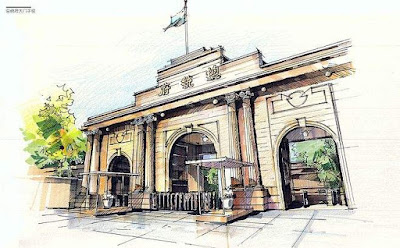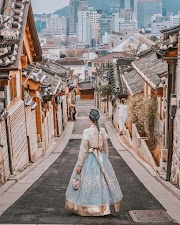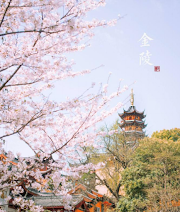Nanjing, the capital of JiangSu Province, is the famous ancient capital of six dynasties in China.Nanjing, a quiet city, is perfect for a vacation in all seasonsShe has her own history, glorious but lying the wounded.She has her own story, the whole city of Firmiana, beautiful but pathetic.
The First stop: Jiming Temple
Jiming Temple is one of the oldest Sanskrit temples in Nanjing, known as "the first temple in the Southern Dynasty" since ancient times. Jiming Temple in spring has long been a famous place for cherry blossom viewing, witnessing countless wonderful romantic encounters.
The Second stop: Nanjing Presidential Palace
The presidential palace in Nanjing is the largest and most complete architectural complex in modern China, where Sun Yat-sen was sworn in as the interim President of the Republic of China. Here, is the origin of a great turning point of the nation, is a short Republic of the beginning of the place.
The Third stop: Confucius Temple and Qinhuai River
Every tourist to Nanjing must go.
During the night, you can cruise on the Qinhuai river and see the lights on both sides in the midst of the soft singing.
Confucius Temple crowded with tourists
Qinhuai River with exceedingly fascination and charm
Jiangnan Examination Office where numerous students competed for the Scholar
The former residence of Li Xiangjun, a legendary woman
An ancient archway written “ the Center of World Culture”
The Forth stop: Sun Yat-sen Mausoleum
This is the mausoleum of Sun Yat-sen, the great democratic revolutionary forerunner in modern China. Facing plain in the front and embracing green hills in the back, the whole building complex is built against the mountain. Looking down from the air, it looks like a "freedom bell" lying flat on the green carpet. It combines the essence of ancient Chinese and western architecture. With high artistic value, it is honored as "the first mausoleum in the history of modern Chinese architecture".
The Fifth stop: Ming Tomb
Ming Tomb is the mausoleum of emperor Zhu Yuanzhang and his empress. It is one of the largest imperial tombs in China. As the first mausoleum in Ming dynasty, it represents the highest achievement of architecture and stone carving art in that period. It integrates humanity and nature in harmony, becoming an excellent example of the combination of Chinese traditional architectural art and environmental aesthetics.
The Sixth Stop: Spirit Valley on Purple Mountain
In the minds of native Nanjing residents, every July, visiting Spirit Valley to see fireflies becomes a ritual to welcome summer. Midsummer night coming, fireflies shed a little broken light in the dark. On the green path to Spirit Valley, tens of thousands of fireflies, staged a summer night carnival. The familiar city changed, now she, like a fairy tale.
http://www.mafengwo.cn/i/15703899.html
The Seventh Stop: Meiling Palace
After the Nationalist Government moved to Nanjing from Chongqing, Chiang kai-shek and Soong Meiling often stayed here, which then was called "Meiling Palace". Shaped like a string of pearl necklace with emerald pendant, the both sides of the ring road, which lead to the main building, are full of French oriental planes. It is so beautiful that is called "the first villa in the far east".
The Eighth Stop: Nanjing Museum
Nanjing Museum is one of the three major museums in China. It was designed by Xu Jingzhi, and modified by Liang Sicheng, both are famous master architects. By 2010, Nanjing Museum has more than 420,000 various types of collections, and 18 treasure of the museum.



































5 Comments
Fantastic,! ! !Looking forward to your new article!
ReplyDeleteI plan to visit Nanjing for only one day, which stops do you recommend most? :)
ReplyDeleteIf you plan to visit to Nanjing in this winter, you can go to the Ming Tomb to see the beautiful snow-covered landscape!
DeleteWow! Such beautiful fireflies!! I'll definitely visit Nanjing for that :D
ReplyDeleteYessss! Nanjing has rich cultural and historical heritage. If you want to experience traditional Chinese culture, don't miss it!
ReplyDelete